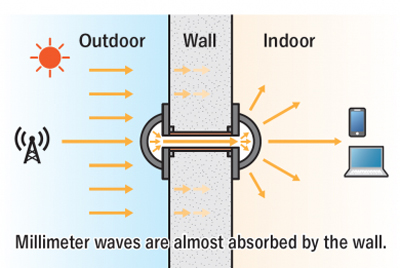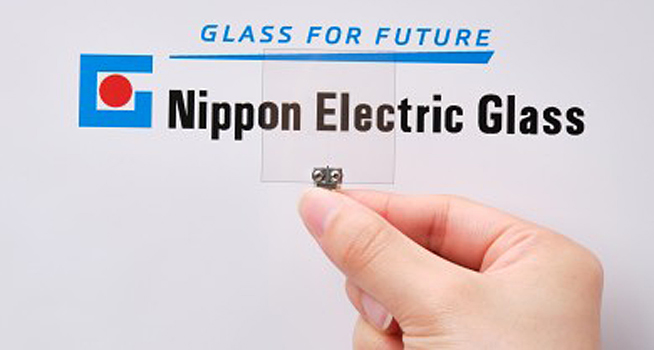Nippon Electric Glass Co. Ltd. has developed a transparent antenna made of a glass substrate, and a repeater, which uses radio wave lenses and does not require power supply, for 5G millimetre-wave wireless communication technology. These products will be exhibited at the fifth 5G Technology Expo to be held at Tokyo Big Sight from June 29 to July 1, 2022.
5G uses radio waves of two frequency bands, Sub6 (under 6 GHz) and millimetre wave (28 GHz). To achieve high-speed communication, it is necessary to use the millimetre-wave band, which can secure a wide bandwidth. However, the millimetre waves are significantly attenuated in the atmosphere. Due to strong linearity of propagation, they do not diffract behind obstacles. To cover a wide area, a mechanism to resolve these issues is required.

The newly developed transparent antenna has a special antenna pattern on a glass substrate, whose dielectric constant (4.0) and loss tangent (0.002) are the smallest in the world. This is a highly efficient transparent antenna. The size of glass substrates can be increased, making it possible to manufacture multiple products from a single substrate. This contributes to improving the antenna productivity and enables formation of antennas for multiple bands on a single substrate.
By making the antenna transparent, the antenna functionality can be added without spoiling the design and landscape of the installation location. The antenna can be installed in various locations, such as windows, walls, displays, and vehicles.

The repeater, which is the other newly developed product, consists of two radio wave lenses and a wave-guide. It receives and retransmits radio waves and changes the direction of radio waves without power supply even under circumstances where radio waves are blocked by walls and window glass. By changing the shape of the lens, radio waves can be transmitted in a certain direction or over a wide range. The lens is not subject to deterioration caused by ultraviolet rays because it is made of glass. It can be used stably over a long period in various places indoors and outdoors.





